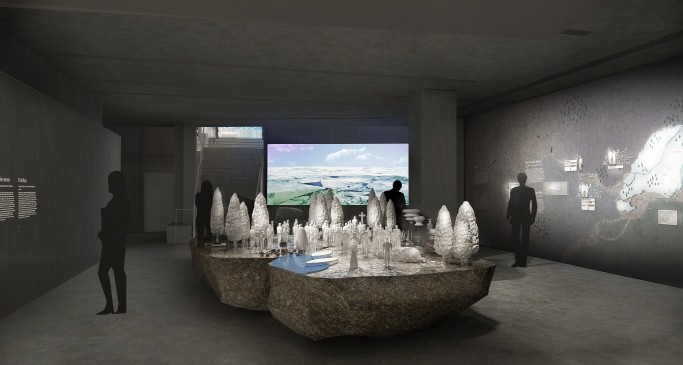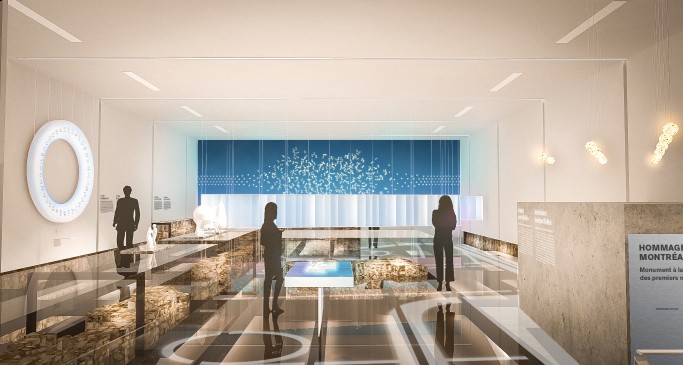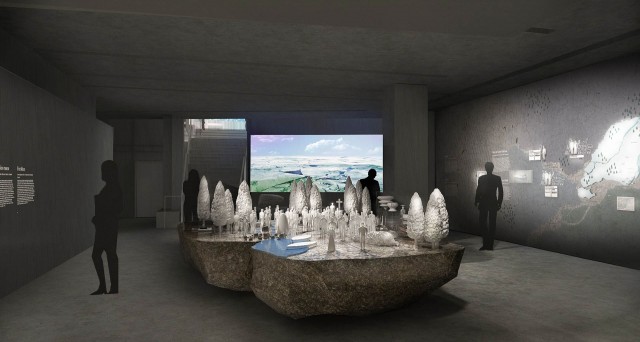November 24th, 2016
Pointe-à-Callière announces an Exceptional Heritage Legacy to Celebrate the City’s 375th Anniversary

The City of Montréal and Pointe-à-Callière, the Montréal Archaeology and History Complex, were pleased to present this Thursday, a heritage legacy to mark Montréal's 375th anniversary, one that will make it possible in 2017 to safeguard and celebrate Fort Ville-Marie, the site where Montréal was founded. This first French settlement was built to shelter Paul de Chomedey de Maisonneuve, Jeanne Mance and some 50 settlers who came here to found Ville-Marie in 1642. Montréal’s first collector sewer will also be restored and made accessible so that visitors can appreciate this unique piece of our city’s history.
An exceptional historic discovery, thanks to archaeology
After years of research, archaeologists and historians can at last visualize what Fort Ville-Marie must have looked like. The place where Montréal was founded is located in today’s Old Montréal, on the Pointe à Callière site. We owe this discovery to the dig campaigns carried out from 2002 to 2014 by Pointe-à-Callière's Archaeological Field School, in partnership with the Université de Montréal, and the unearthing in 2015 of part of one of the bastions, key to their understanding of the fort’s location and structure. Today, Pointe-à-Callière can confirm that the fort measured about 2,500 square metres; it was rectangular in shape with four bastions made of wooden posts; and it was oriented parallel to the St. Lawrence River, largely on the Pointe à Callière site. In addition, we now have details about part of its inner layout.


A tribute to the city’s founders
A new pavilion is being built to protect the remains of Fort Ville-Marie and make them accessible starting in May 2017. A new exhibition, Where Montréal Was Founded, will pay tribute to Paul de Chomedey Maisonneuve, and Jeanne Mance, from the very start of this “foolish venture.” The exhibition will open with an installation evoking the first Mass, the ceremony held to found Ville-Marie, and will introduce the other settlers who also chose to leave France for the New World, inspired by their religious faith. Visitors will then continue to a higher level in the pavilion, where they will be able to walk across a glass floor overlooking the remains of Fort Ville-Marie itself and other remains unearthed during the different dig campaigns, including an Indigenous fire pit pre-dating the city’s founding, a well dug by Jacques Archambault in 1658, the basement of what may have been a guardhouse, some of the fort’s palisades, the stone foundations of a metal-working shop, part of a stone wall from Callière's Residence and a wall separating its gardens from its yard. Numerous artifacts found during the digs will also be presented, in an evocative setting: a sundial etched into a piece of slate – thought to be the oldest in North America – along with other objects reflecting religious practices and everyday life, munitions and gun parts, as well as trade items.
The country’s first collector sewer at last accessible
The legacy also includes a new 110-metre section of Canada’s first collector sewer, a feat of civil engineering unique in North America. The Little River, which once flowed past Fort Ville-Marie, was canalized and turned into a vaulted collector sewer in 1832. Visitors will enjoy an immersive experience thanks to The Memory Collector, a light installation projected onto the stone walls of the collector sewer, in a specially designed sound environment.
The work financed by the City of Montréal cost an estimated $30.5 million, including $18 million to build and fit out the new pavilion and $12.5 million to restore and showcase the city’s first collector sewer. This sum covered the archaeological digs, conserving and restoring the remains and the artifacts discovered, museography, relocating public infrastructures, fitting out the different sites and creating a public square with urban gardens on Place D’Youville. Parks Canada, for its part, contributed $1 million to support the Museum’s research and development work into innovative solutions for safeguarding the remains of the city’s origins.
Essential partners
Pointe-à-Callière wishes to thank the City of Montréal, the project sponsor, the city’s Direction de la Culture et du Patrimoine and the Ville-Marie Borough, with which the Museum carried out the development work, and the many teams of professionals who helped bring this project to fruition. Lastly, the Museum also thanks the donors who contributed to the Pointe-à-Callière Foundation’s major fundraising campaign to support the operation of the pavilion and the Montréal Archaeology and History Complex. The pavilion will bear Quebecor’s name, and the Fort Ville-Marie – Québecor Pavilion will be inaugurated on May 17, 2017, the very day of Montréal’s 375th anniversary.









